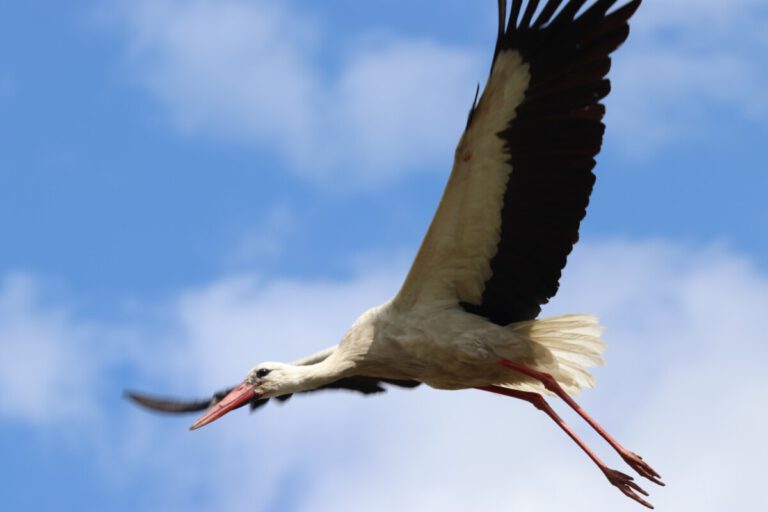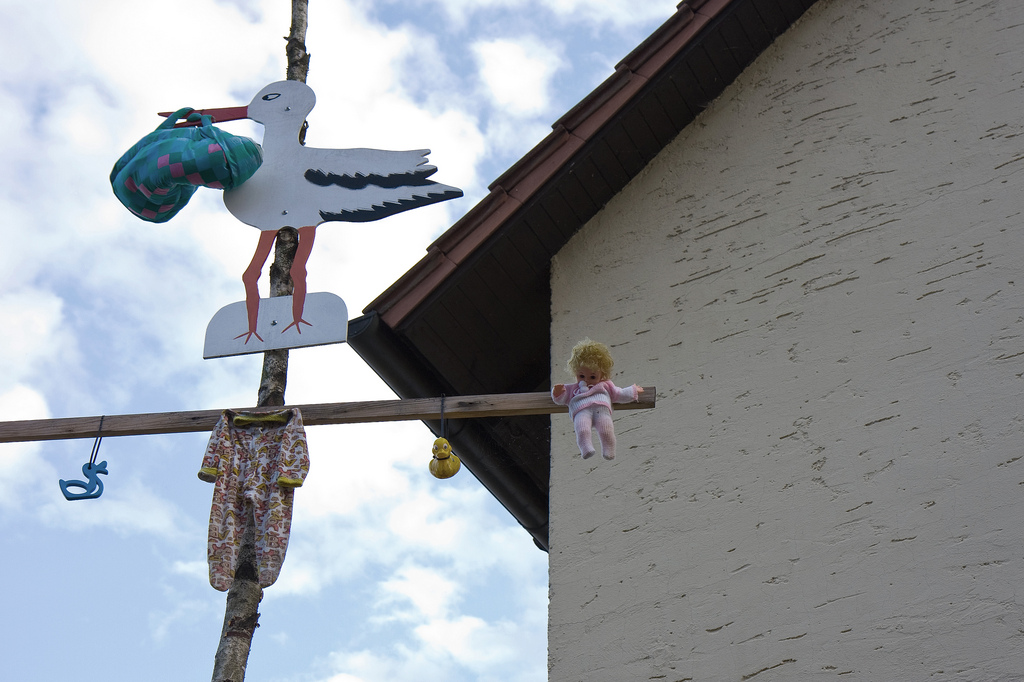
Have you ever wondered how the stork became the symbol of childbirth in the Netherlands? Are you curious as to why your Dutch friends put up storks outside their houses when a baby is born? Here is a brief history of how that tradition came to be!
When a Dutch child asks “where do babies come from?” they are often told that they are delivered by “ooievaars“. For a long time, the stork has been a lucky charm of childbearing. At the beginning of the 20th century, it became the symbol of childbirth in the Netherlands.
A few years ago, on my birthday, I remember getting a toy stork from a Dutch friend of mine. He gave told me it would bring me luck. At that time I didn’t realise how superstitious the Dutch were or that the stork was still seen as a lucky charm.
The Dutch say that “the stork has visited” when a child is born and in some parts of the Netherlands new parents often put a (toy) stork in their front yard. The legend of the stork is not just a story that parents tell little kids, it has now become an integral part of Dutch traditions surrounding childbirth.
Some fun facts about the stork
- The Dutch name is oievaar, Other popular names including eiber, uiver, hoetbar and adebar.
- The Hague’s coat of arms includes a stork (minus the baby).
- Storks are the “playboys” of the bird family as they are not monogamous, taking on a new partner every year.
- Storks lay a maximum of seven eggs a season and their young ones eat approximately four kilograms of food every day.
- After 40 days the young ones get flying lessons from their parents, and after 10 weeks they become independent and are left to fend for themselves.

History of the stork in mythology
In 18th century Germany, parents used to conceal the truth of where babies come from with a number of stories about children who literally grew on trees — very ethereal. And just like that, the myth of the stork as a child-bearer came to be.
The stork is traditionally regarded as a lucky charm, not only in the Netherlands but also in countries such as Turkey, Morocco, and Greece. They believe the bird to have similarities with humans: it cares for its young and mourns their loss if they die. In the Middle Ages, people in Germany even believed that the stork could prevent fires and, as a result, storks could be found in practically every German house.
Later, the stork became directly associated with childbirth. In German folk law, babies were given directly to mothers or dropped into the house through the chimney. Due to this method of delivery, the stork was to blame if a baby was born disabled or stillborn. On a lighter note, there was a sweet tradition to let the storks know you wanted children. The women of the village who wanted children put candy on their windowsills.
As well as myths about storks delivering babies, there are also stories about them taking babies away! In Greek mythology, the story goes that a woman had been turned into a stork as a punishment and then she came back to “kidnap” her own child. In Egypt, it was thought that the soul of a man similar to that of a bird. When a stalk returned, it meant the return of a lost soul.
So how did the stork become associated with childbirth in the Netherlands?

The symbolism of the stork as a bird that brings babies dates back to 1909 when Princess Juliana van Oranje was born. The Dutch royal family received a special card announcing the birth of the child. On the card were: a picture of Noordeinde Palace, and a stork on a nest with a baby in it. The stork on the card was announced to the illustration of Wilhelmina that it had brought a child for her. Since then, everyone in the Netherlands uses the image of a stalk when a baby is on its way.
The Netherlands might be a sex-positive haven nowadays, but talking about sex and having children was taboo in the early 20th century — surprise surprise. When children asked their parents where babies came from, they were told that storks brought them or that they were kept somewhere in the earth and dug up through a hollow tree or special stone! A long way of getting around talking about sex right? Of course, kids also wanted to mummy was lying in bed right when the stork brought the babies, so and they were told that their mum had stepped on a nail while walking outside! 😂
Fast forward to today in the Netherlands, people still tell their children that storks bring babies to new mothers. They also still believe in the luck that storks bring. So when next you see a stork in the neighbourhood, just know that a baby has been delivered to a lucky family, somewhere out there!
Do you find the story of how the stork became a symbol of childbirth in the Netherlands interesting? Does your country have similar traditions of its own? Let us know in the comments below!
Editor’s Note: This article was originally published in November 2018, and was fully updated in March 2021 for your reading pleasure.
Feature Image: Henrik Hansen/Unsplash

Actually, the picture of the stork and the crucifix was taken (by me) in Germany. In the Netherlands we don’t crucify baby dolls… :-S
When I was young, here in the U.S., sometimes we were told we were found in the cabbage patch. Several years ago, a popular Christmas gift was the Cabbage Patch Doll. We were also told the stork brought us, so that story somehow “flew” across the Atlantic from The Netherlands. And for that, I say, dank je wel!
In Russia the same myth about this bird and where babies come from))